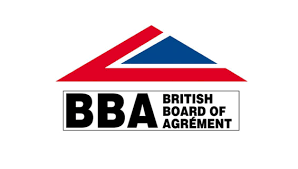
How to Identify Rising Damp?
Catching the signs of rising damp early can prevent extensive structural damage and the need for costly repairs — especially in period homes where materials are more porous and vulnerable.
Common Signs of Rising Damp Include:
-
Tide marks or damp staining on the lower portion of internal or external walls
-
Peeling, blistering or bubbling paint near skirting level
-
Flaking or crumbling plaster at the base of walls
-
Visible salt deposits (white powdery patches) left behind as moisture evaporates
-
Musty, damp odour that lingers in enclosed areas
-
Cold, damp-feeling walls to the touch
-
Decaying skirting boards or floor timbers due to prolonged moisture contact
-
Lifting or distorted wallpaper, especially in corners or behind furniture
-
Black mould patches (in more severe or neglected cases)
These symptoms typically appear at low level, indicating that moisture is rising up through the walls from ground level — often due to a failed or absent damp-proof course (DPC), or bridging caused by external ground levels or render.
If you notice any of these signs in your home, especially in older properties, it’s essential to book a professional damp survey to confirm the cause and prevent long-term damage.
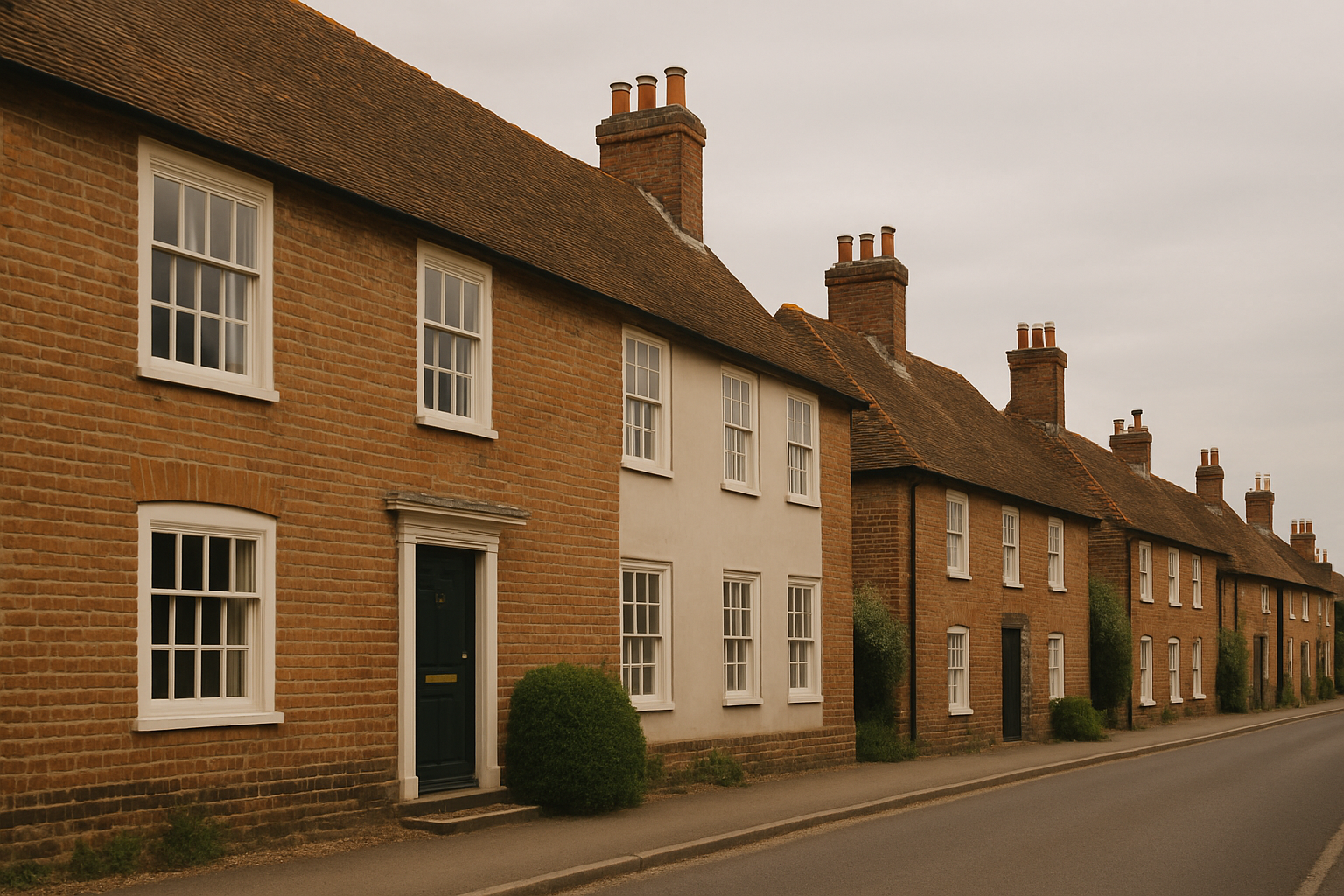
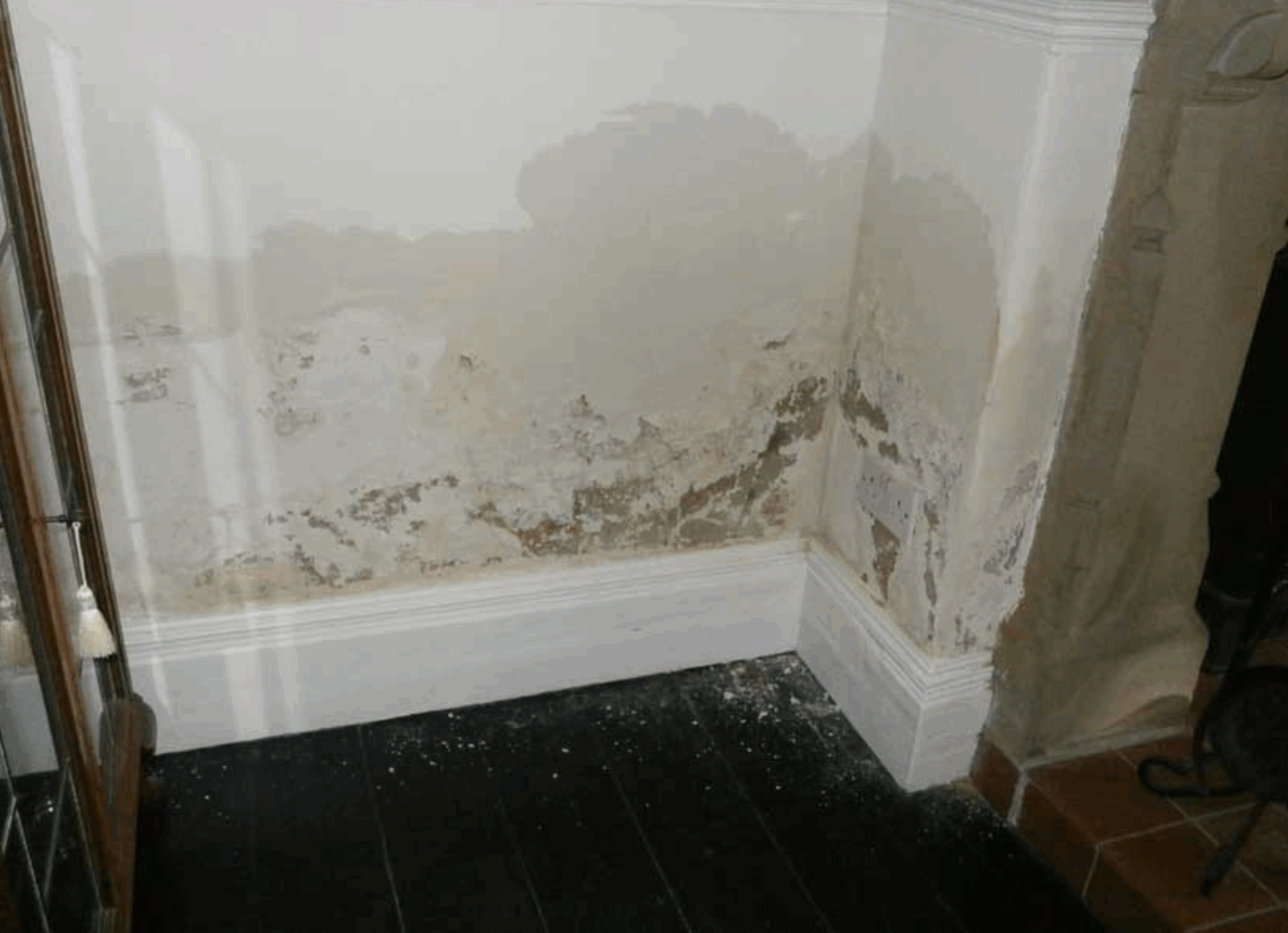
What Causes Rising Damp?
Rising damp occurs when groundwater is drawn up through the walls of a building by capillary action — like moisture soaking into a sponge. In well-maintained homes, this process is prevented by a damp-proof course (DPC) — a barrier layer installed at the base of walls. But in many older properties, the DPC has either failed, deteriorated over time, or was never installed in the first place.
Common Causes of Rising Damp:
-
Missing or failed DPC – Common in period homes built before modern damp-proofing standards
-
Bridged DPC – When external ground levels, render or internal plaster bridges over the DPC and allows moisture to bypass it
-
Porous building materials – Traditional bricks, lime mortar and solid walls are naturally absorbent
-
Blocked cavities – Debris in wall cavities allows moisture to track across
-
Poor drainage – Inadequate rainwater management or nearby standing water increases moisture load on foundations
Once moisture rises into the walls, it carries ground salts (such as nitrates and chlorides), which remain in the plaster after evaporation. These salts are hygroscopic — meaning they attract moisture from the air — which is why walls may continue to feel damp even after the source has been removed, unless specialist replastering is carried out.
At Bramley & Stone, we not only identify the underlying cause of rising damp but also specify the correct method to resolve it — using breathable, traditional materials that respect the age and construction of your home.
Book a Rising Damp Survey Today
For reliable damp proof course installation company, contact us today and rectify any existing defects promptly.
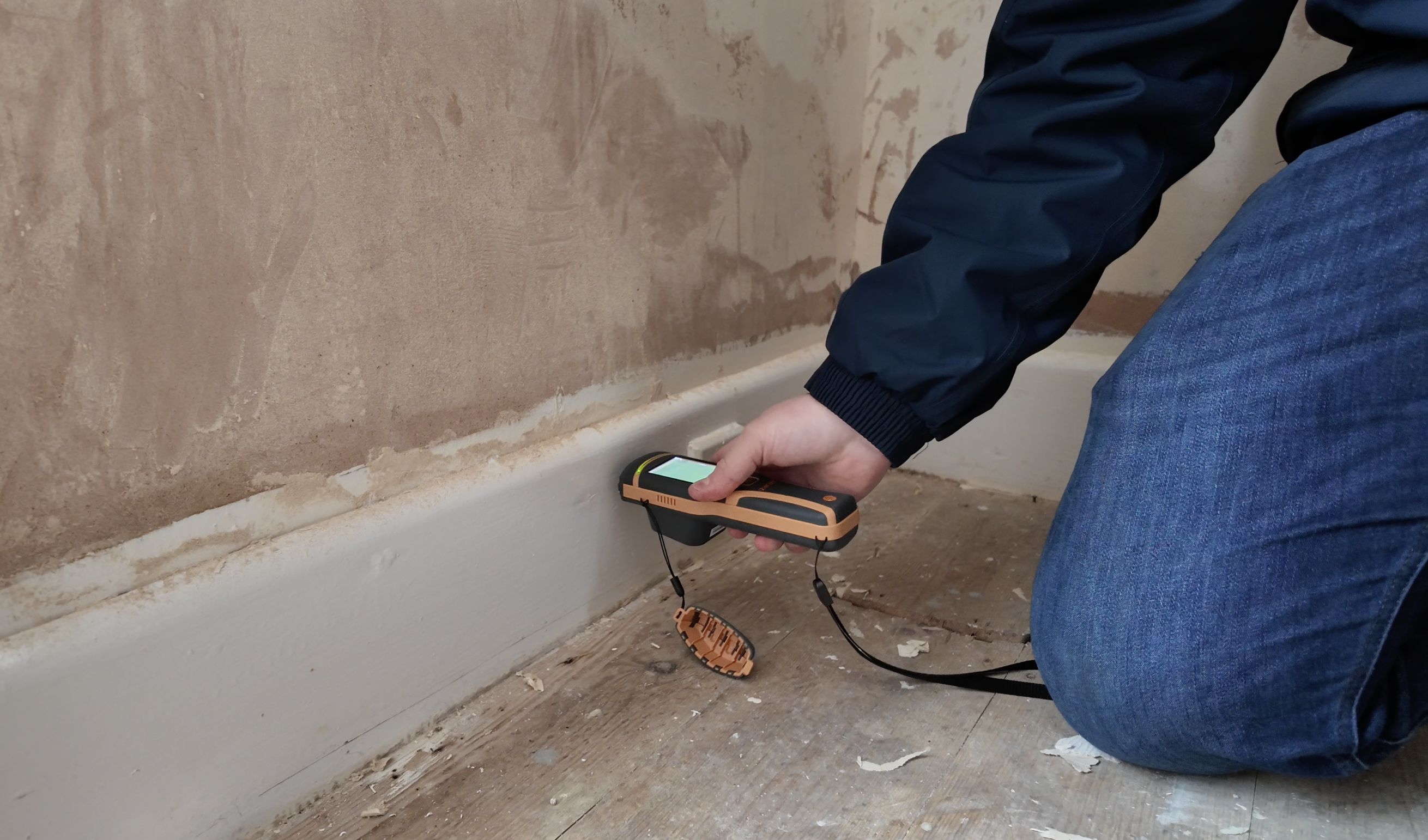
How can you prevent Rising Damp?
Preventing rising damp is all about protecting your property’s lower wall structure from prolonged contact with moisture — especially in older homes where breathable materials and traditional construction methods are more vulnerable to water ingress.
While rising damp can’t always be prevented entirely in period properties, there are several key steps that significantly reduce the risk:
Proven Ways to Prevent Rising Damp:
-
Maintain a clear damp-proof course (DPC)
Ensure external ground levels, garden beds, or render finishes do not sit above the DPC line. Even a bridged DPC can allow moisture to bypass the barrier. -
Improve drainage around the property
Avoid standing water near external walls. Check that gutters, downpipes, and soakaways are functioning and free of blockages. -
Use breathable materials internally and externally
Avoid gypsum-based plasters or waterproof paints that trap moisture. Instead, use lime-based render and breathable paints that allow moisture to evaporate naturally. -
Clear wall cavities
In cavity wall properties, ensure there is no debris bridging between the inner and outer walls. This is a common cause of damp transfer. -
Inspect and repoint mortar where needed
In brick-built homes, failed or cement-based pointing can trap water and contribute to damp issues. Repointing with lime mortar helps walls breathe. -
Regularly inspect vulnerable areas
Especially at the base of external walls, in cellars, and behind fixtures like skirting boards or radiators.
Did you know?
Many rising damp problems aren’t caused by a missing DPC — they’re caused by modern materials or landscaping that interferes with the building’s ability to breathe.
At Bramley & Stone, we help homeowners prevent rising damp by not just treating the issue, but diagnosing the conditions that caused it in the first place — and offering guidance to stop it from returning.


How Do You Treat Rising Damp?
Treating rising damp isn’t just about stopping moisture — it’s about restoring your home properly, using breathable materials and proven techniques that are sympathetic to traditional construction.
At Bramley & Stone, we follow a structured, survey-backed approach to ensure rising damp is resolved at the root cause, and that future moisture problems are prevented.
Our Typical Rising Damp Treatment Process:
-
✅ 1. Identify the Cause
We carry out a detailed damp survey to confirm rising damp and rule out other contributing factors like condensation, leaks, or bridging. -
✅ 2. DPC Installation
Where appropriate, we install a modern chemical damp-proof course (DPC) using an injected cream system. This creates a permanent barrier within the wall, preventing ground moisture from rising. -
✅ 3. Remove Contaminated Plaster
Hygroscopic salts from the ground often remain in old plaster and continue attracting moisture. We remove this material, typically to a height of 1.2 metres or above visible signs. -
✅ 4. Apply a Breathable Base
We apply an SBR slurry bonding coat to seal masonry before using a specially formulated, breathable lime render mix — designed for period properties. -
✅ 5. Skim Finish or Lime Topcoat
Once dry, we apply a smooth, breathable skim or lime topcoat, ready for decoration using vapour-permeable paints or finishes.
Why Our Treatments Last:
-
We never use gypsum or sand-and-cement, which can trap moisture
-
Every specification is tailored to your home’s age, construction, and condition
-
Our work is backed by a guarantee and supported with aftercare guidance
Important Note:
A DPC injection alone is not enough. Without removing contaminated plaster, rising damp symptoms often return — that’s why we offer a complete system, not just a quick fix.
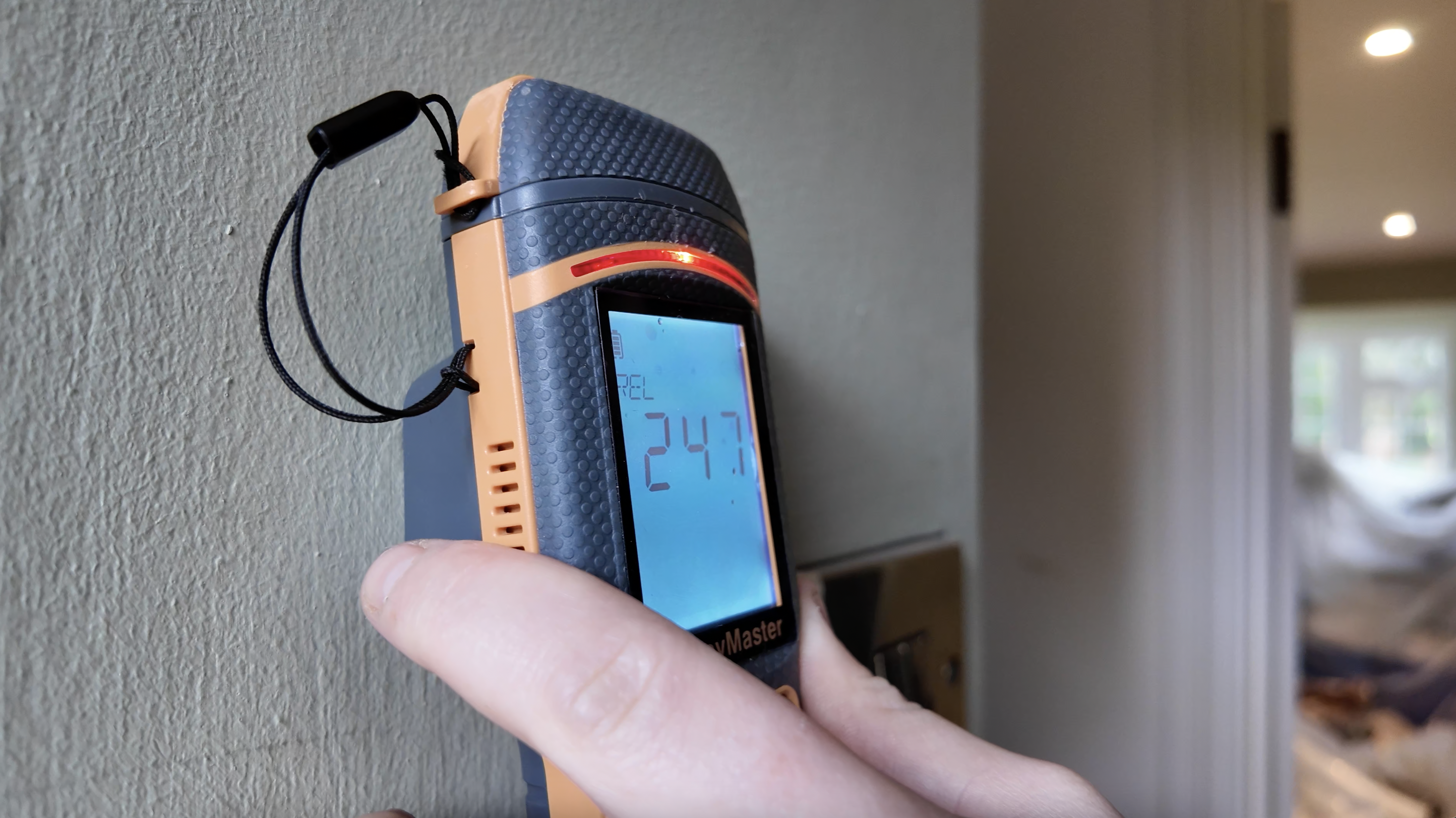
Don’t let Rising damp ruin your property!
Choose Bramley & Stone Damp & Timber Specialist for a thorough inspection and expert rising damp treatment.
“Excellent service from start to finish. Bramley & Stone quickly identified and treated dry rot in our property. The team were professional, tidy, and clearly knew what they were doing. Very reassuring to deal with true specialists.”Read Full
“Really impressed with Bramley & Stone. They diagnosed rising damp in our Victorian home and treated it properly using breathable materials. Great communication, clean work, and a finish that blends perfectly with the original walls. Highly recommend for traditional homes.”Read Full
Book a Rising Damp Survey Today
For reliable damp proof course installation company, contact us today and rectify any existing defects promptly.


